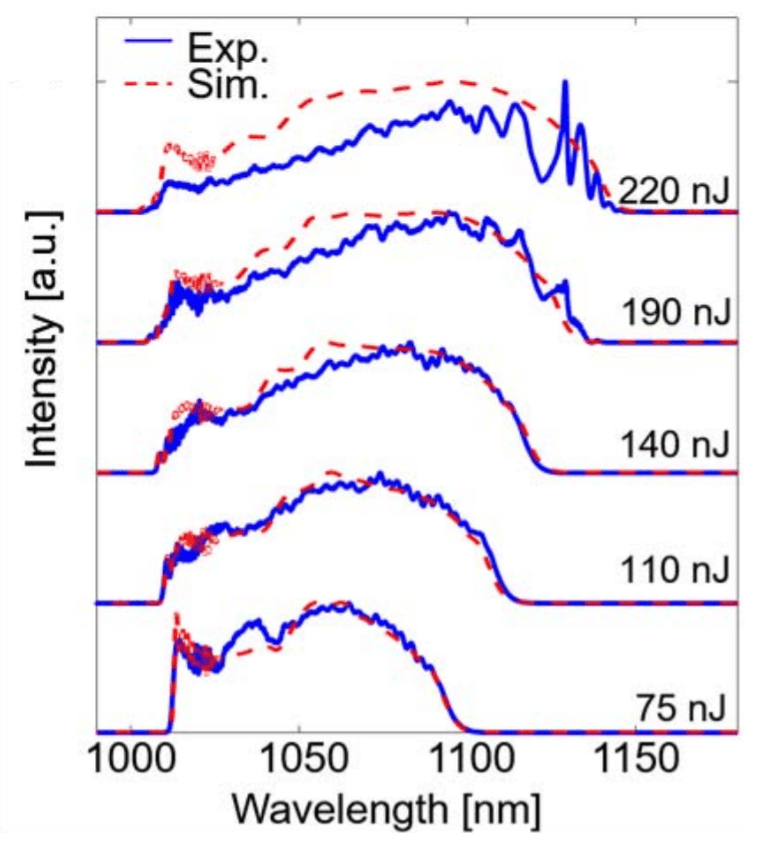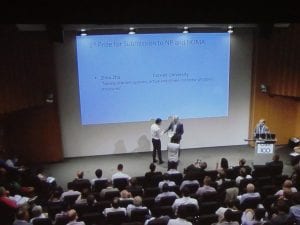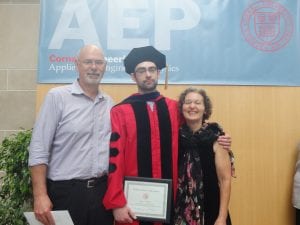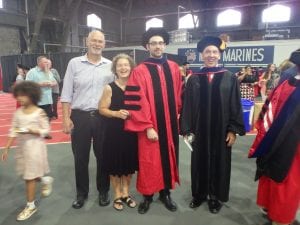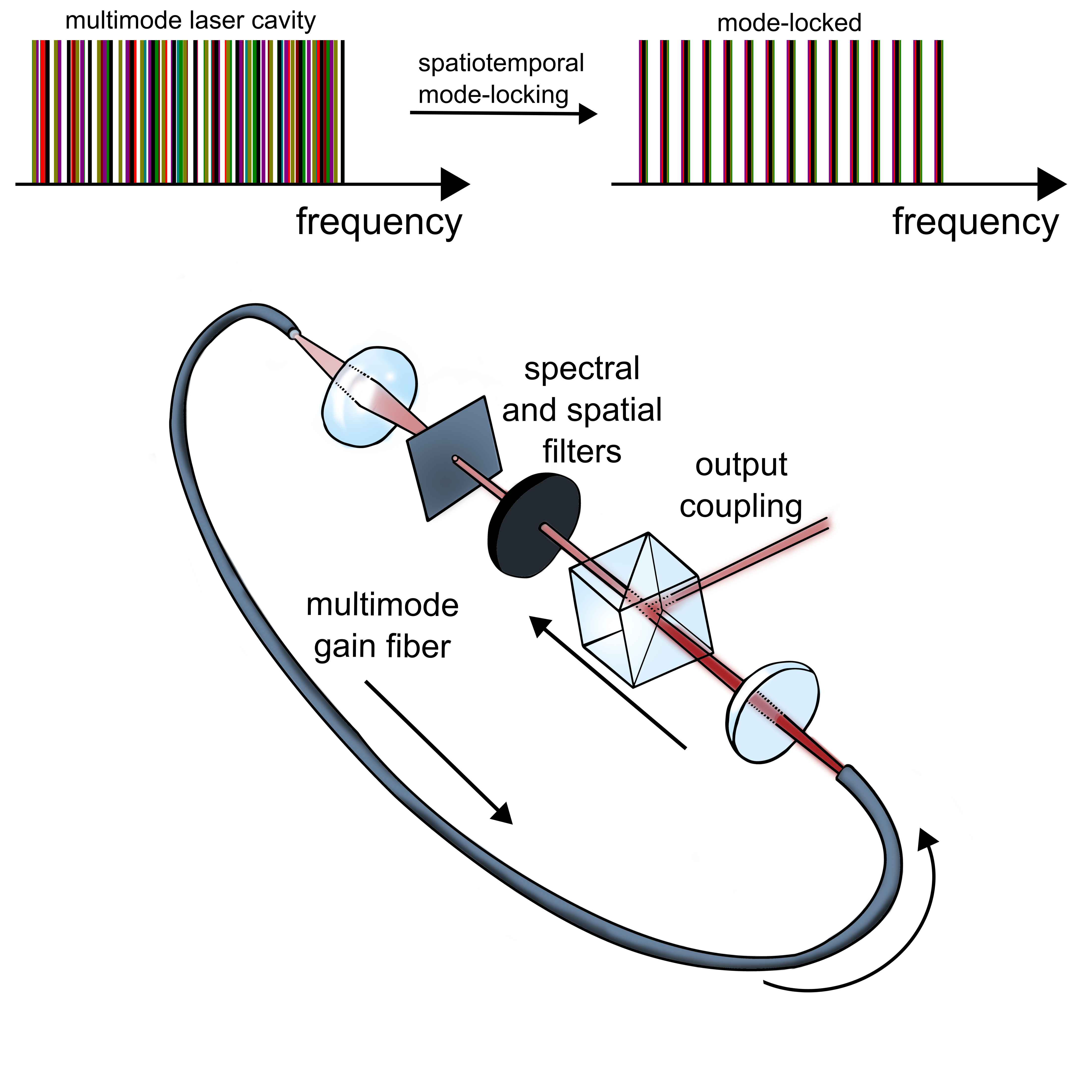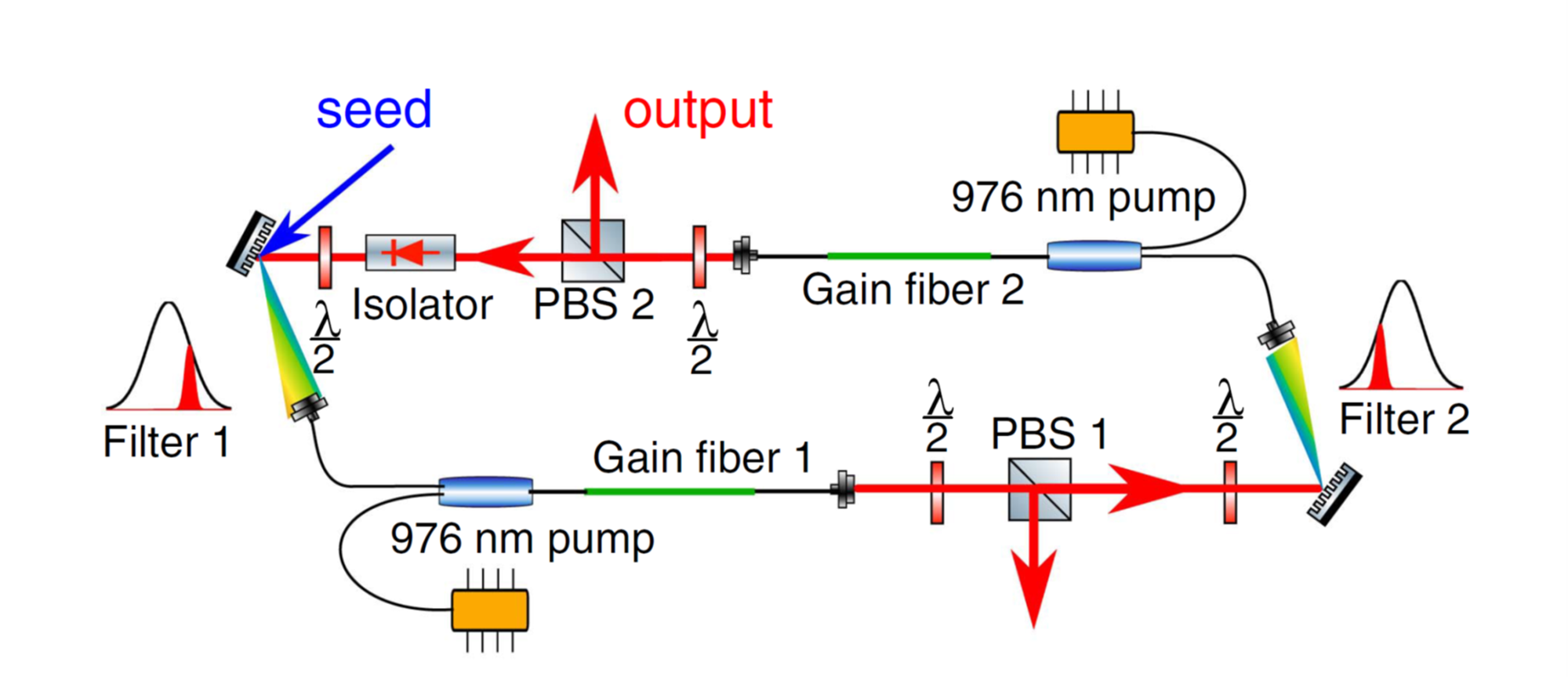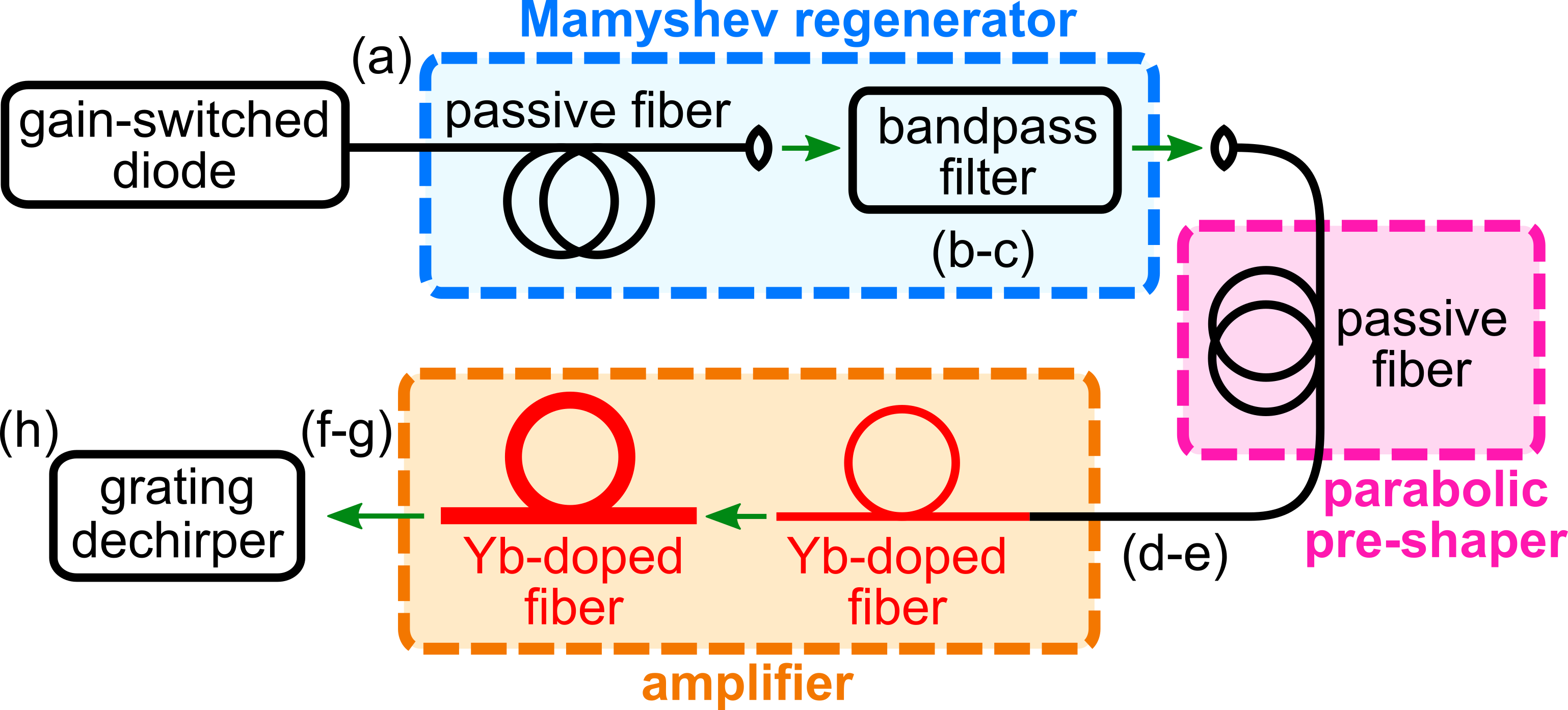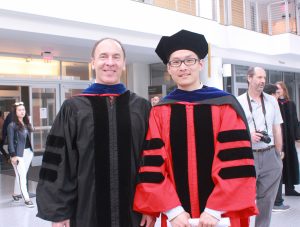Self-seeded, multi-megawatt, Mamyshev oscillator
As was shown by Liu et al., the pulses from a Mamyshev oscillator can be enhanced by increasing the spectral separation between the two bandpass filters. However, this comes at a cost: the same mechanism that strongly stabilizes the pulse against continuous-wave breakthrough also suppresses the weak electric field fluctuations that are needed to initiate pulse formation. Thus, a Mamyshev oscillator may be constructed that supports very high-energy pulses, but which can be mode-locked only with the aid of an external seed source. In this paper, we address this problem by showing how a simple auxiliary cavity–a “starting arm”–may be embedded into a Mamyshev oscillator, enabling the oscillator to seed itself at the flip of a mirror. A video of this process can be viewed here. We have furthermore scaled part of the cavity to fiber with a 10-micron core diameter. The result is a fiber oscillator with self-starting-like behavior that can deliver 190-nJ, 35-fs pulses without any external amplification, for an unprecedented peak power of 3 MW after dechirping.
